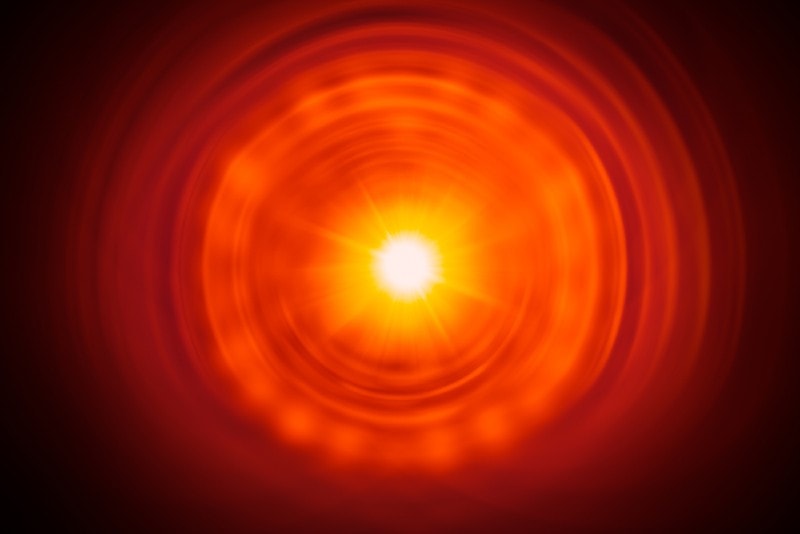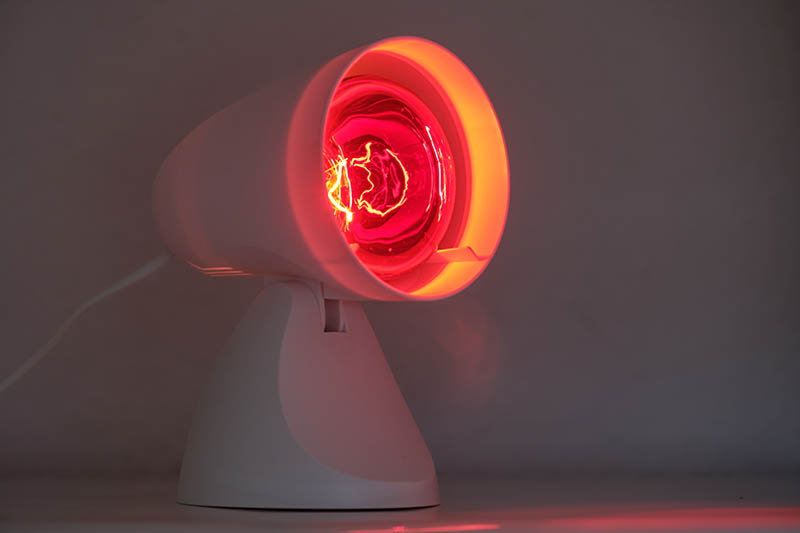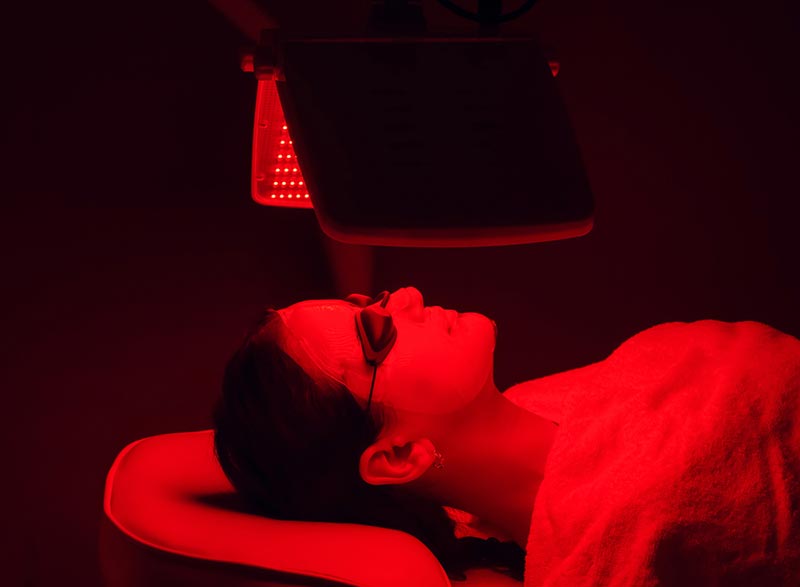What Is Near-Infrared Light? What Is It Used For?
Last Updated on

Infrared light has become quite an important science topic over the years, as we’ve been able to understand what it is and how it works with much more clarity. Near-infrared light is one aspect of infrared light that is part of this discussion too, but what exactly is near-infrared light? Why is it different from normal light? To answer this, we’ll go into the details and explain both the basics and the in-depth knowledge about it, as well as its recent usage for scientific discovery.
Near-infrared light (NIR) is infrared light closest to the range humans can see, with wavelengths from 0.75 to 1.4 micrometers. Keep reading to learn more!

How Does It Work?
Near-infrared light (NIR) is a type of infrared light that is the closest on the electromagnetic radiation spectrum to human sight. However, since it is further than what we can see, the wavelengths recorded from NIR are just slightly longer, from 0.75 to 1.4 micrometers (µm). Do note that we are referring to the most commonly used division of measure. In either case, NIR gathers more colors and information that are around us every day, although it’s unnoticeable.
Obtaining an accurate reading of near-infrared light can be done by examining the absorption bands in nanometers (nm). The range of these bands extends from 700 to 2,500 nm, whereas visible sight only ranges from 400 to 700 nm.
You can also observe temperature and frequencies with NIR as well. In Fahrenheit, the temperature range of NIR extends from 3,266° to 6,495°. The frequency measures from 214 to 400 hertz.

What Are the Other Types of Infrared Light?
Near-infrared light isn’t the only type of infrared light. There are a few other kinds, including mid-infrared and far-infrared. There are also short-infrared and long-infrared as well, but they aren’t discussed as much. If you only want to know about NIR, you can skip over this section.
Mid-Infrared Light
With a wavelength range of 3 to 8 µm, mid-infrared light (MIR) is used to visualize space objects such as comets, asteroids, planets, and even space dust. MIR also plays an important role in heat-seeking projectiles (missiles), as this is the primary technology that tracks the emissions coming from the exhausts of planes.
Far-Infrared Light
Compared to the other infrared variants, far-infrared (FIR) has a wavelength range from 15 to 1,000 µm, according to the common division. It is able to gather information from incredibly low-temperature subjects. FIR is capable of recording data from distant interstellar systems, such as the center of a galaxy or cold dust clouds. This type of infrared is able to be felt by us humans as we are exposed to different sources of heat. However, we still can’t see it with our own eyes.
Where Is It Used?
Near-infrared light is used in a multitude of applications. This resource is employed in photographing distant stars, namely red giants and cold stars. Additionally, you may be using NIR to view this article right now because it’s applied in fiber-optic communications due to its benefits for traveling through certain materials.
Other than these modern uses, NIR can also be found in therapeutic services, including red-light therapy (RLT). This is mostly a new practice, with considerable strides in treating skin health problems. For example, red light may be beneficial to those with wrinkly skin, acne, or irritated pores. On the other hand, this is still being studied, and there is no absolute guarantee for these positive effects. Saunas are another place that NIR is utilized, with similar benefits.

James Webb Telescope
We mentioned that NIR is beneficial to photography, but its practicality can be seen in a recent technological wonder—the James Webb Telescope (JWT). Its first photo was taken in July of 2022, with extraordinary imagery of a distant galaxy cluster. The JWT has a lot of advantages over the Hubble Telescope because it can see MIR and FIR whereas the Hubble can only see ultraviolet and visible light. The cost to build such a scientific tool was nothing short of a fortune, as it reached $10 billion in total funds to complete the project.
Advantages of Near-Infrared Light
One of the biggest upsides to NIR is the fact that it enables us to visualize the vastness of interstellar space because our visible sight is unable to see the same range of wavelengths. Near-infrared light is also beneficial for medical purposes (NIR spectroscopy), especially when using equipment to diagnose a patient. As we mentioned earlier, it has a part in telecommunications, too; the advantages here are plentiful.
Disadvantages of Near-Infrared Light
Although there are many reasons to love NIR, that doesn’t mean there aren’t any cons. In fact, this infrared technology has quite a low sensitivity, so a specific set of stimuli is needed to operate it correctly. When used in high quantities, NIR has some radiation that can manifest in harmful side effects, particularly eye cataracts.

Frequently Asked Questions on Near-Infrared Light
Is Near-Infrared Light Good for You?
NIR can be a good option for many medical treatments. It may help with skin diseases or heart health due to its characteristics of raising heart rate and circulation. But do keep in mind the side effects we went over earlier, as they can be problematic if used in excess. Luckily, cancers are not known to be an issue with prolonged NIR treatment.
How Often Can You Use Near-Infrared Light?
When it comes to RLT, you can spend multiple days per week doing short sessions for the best results. However, it’s best to do this in moderation due to the possible side effects on the eyes.

Conclusion
Near-infrared light isn’t exactly a new discovery, but its usage has become more and more relevant over the years. Our explanation covered the most important information you can know about NIR, as well as its practical applications. We hope this informative guide gave you the right idea of what NIR is and how it works!
Featured Image Credit: Quality Stock Arts, Shutterstock
About the Author Robert Sparks
Robert’s obsession with all things optical started early in life, when his optician father would bring home prototypes for Robert to play with. Nowadays, Robert is dedicated to helping others find the right optics for their needs. His hobbies include astronomy, astrophysics, and model building. Originally from Newark, NJ, he resides in Santa Fe, New Mexico, where the nighttime skies are filled with glittering stars.
Related Articles:
Binocular Magnification Chart: Numbers & Distances Compared
What Is the Best Binocular Magnification for Hunting? Optical Features Explained
When Were Binoculars Invented? History, Today & Future
How to Clean a Refractor Telescope: Step-by-Step Guide
How to Clean a Telescope Eyepiece: Step-by-Step Guide
How to Clean a Rifle Scope: 8 Expert Tips
Monocular vs Telescope: Differences Explained (With Pictures)
What Is a Monocular Used For? 8 Common Functions
